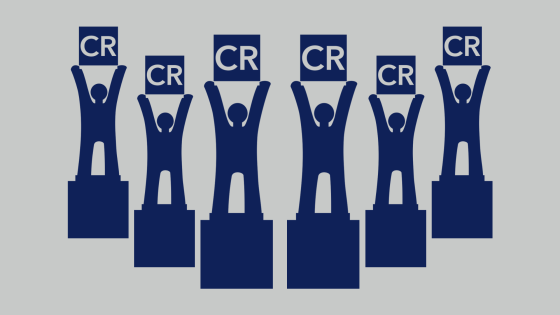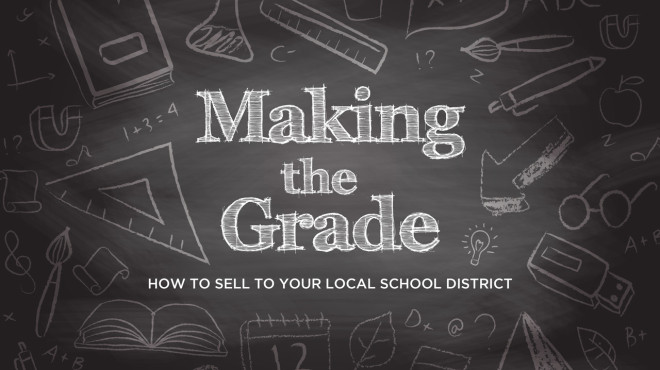Waste.
It’s a problem for a lot of us in our personal lives and in our professional lives, but it is one of the biggest problems for your local schools. Schools are already working with limited budgets, and it seems like everyone wants a piece of it. That’s why a lot of schools apply for grants to get funding for projects like going one-to-one with their students and laptops.
Do a walk-through of any school, and you will likely find overflowing recycling bins or trash cans and stacks of jobs piled high on tables or laying on MFPs. Go into any class and you may even find an overused Single Function Printer.
Now, open up a filing cabinet. Whew! That’s a lot of paper.
When I was teaching 10th grade, I was one of the culprits — but trust me, I wasn’t alone. My filing cabinet was full of printed worksheets that I never even used. I would create a multi-page packet and send it to the copier, only to realize that there was a typo. I would then have to run down to the copier to stop the job—if I caught the typo early enough. Worst case scenario? I’d have to reprint the packets. Other times, I would walk into the Work Room to pick up my jobs only to find that another teacher had mistakenly taken my job which resulted in me re-printing my job for my 90 students.
Search for nationwide stats on paper usage in schools. It doesn’t take long for the number of pages printed per year to get out of hand.

Can you imagine being the CFO of a school and dealing with all this? Where would you go to get answers about who was doing all the printing? Who did all that color printing? Why did printing cost more this month than the last? How do you budget the district’s printing cost for the year?
Oftentimes, they’ll call their copier rep to ask them these questions. The answer that they usually get is something like, “We can send out a technician to check the meter.” Okay, but that doesn’t actually answer any of the CFO’s questions.
Enter PaperCut. You can now provide your customers with a dashboard that answers all those questions and more. Plus, it puts power in the district’s hands with tools like quotas and rules-based routing. So how do we pitch it and ultimately close the deal with school districts?
Talk to the Right People
Who are the decision makers in a district? One of the accounts I recently worked with told their copier dealer NO each time they asked them to evaluate PaperCut. Who was the rep reaching out to? The CIO who thought that PaperCut was just going to be another project on her plate. Yet another project that she quite frankly didn’t have the time or resources to tackle.
Sometimes, you have to present to many people to get some traction. I recommend getting a meeting with at least the CFO, CIO, and the Superintendent(s).
The CFO is going to love that he can create an accurate budget with reports from the PaperCut dashboard. He’ll get even more excited when you explain that you can save the district money and offer them a way to control the printing costs.
The CIO (or equivalent title) will love that this can simplify their work life with things like Find-Me Printing and Mobility Print.
The Superintendent — typically the main decision maker — will love all those features, too. When the Super sees the CIO and CFO’s eyes light up, he will be ready to take your proposal to the school board who ultimately decides to adopt the plan.
This is exactly what happened with the school I mentioned earlier — they are now happy PaperCut users!
The Power of Teachers
I should also mention that sometimes the school administration worries about how PaperCut will affect their staff… and the number of disgruntled emails that they will receive.
When the administration is open about why they’re implementing PaperCut and the benefits it brings, teachers are much less likely to riot.
Take one of the Supers that I recently worked with for example. He held a staff meeting to explain to teachers that the school is not currently implementing a printing quota, but they are tracking all prints to ensure efficient use of resources. He also discussed the many benefits that PaperCut would bring to the school. For example, it would make it easier to print from mobile devices while features like Find-Me Printing would help reduce waste and add convenience. They also discussed how the extra savings that Papercut would create could be used for other programs in the future. Pair all of that with the other cool features like Scan to Google Drive, and the staff felt much better about the roll-out of the solution.
It’s important to have the faculty on the same page as the administration. At the end of the day, they are the ones who are using the product and you’d better believe that they will not shy away from telling anyone and everyone what they think about it.
Written by Kayla Andrews – teacher turned ACDI Senior Account Manager





